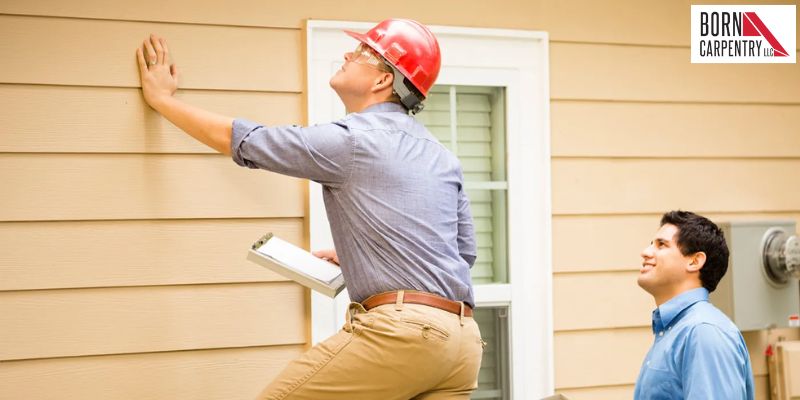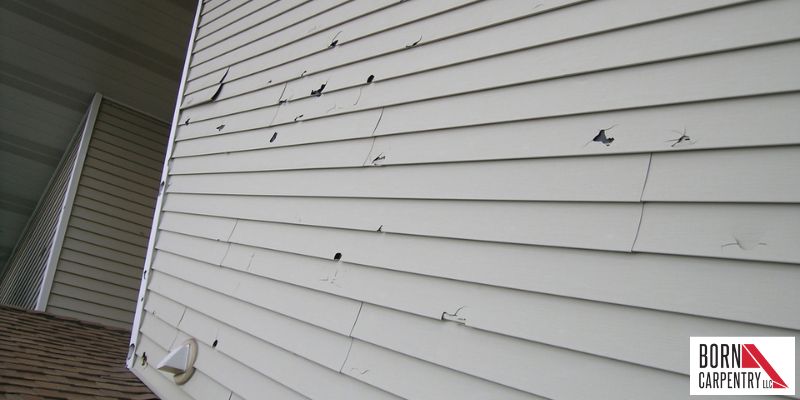Did you know that there are 10,000 severe thunderstorms and an average of 1,000 tornadoes every year in the United States? Thunderstorms create torrential rain, ferocious winds and occasionally hail, while tornadoes wreak havoc on structures. Mother Nature’s fury can cause significant damage to some people’s roofs while others escape unharmed. Knowing how to identify even minor roof damage following a storm is crucial.
Here are a few key actions that can help you determine whether you need siding repair or not…
#1 Examine The Condition Of The Siding From Top To Bottom

The eaves and gutters shield the top of the house from significant damage, depending on the age and design of the structure of the house. Look for siding flaws, particularly at the bottom of the home, where a direct strike is more likely. An older house is more vulnerable to severe damage, especially if the siding is weak and aged.
Note: Wood-sided homes are more susceptible to harm as wood decay is typical near the ground and around windows.
#2 Take A Walk Around Your Yard To Examine The Condition Of The Siding
Go on a walk around your yard and look for any siding fragments, as some parts or pieces may have blown off during the storm. Pieces may contain elements of the siding, such as metal, wood, siding chips, etc. This often takes place when a storm causes the siding to be torn off in pieces.
#3 Get Insights About The Siding
Due to its designed longevity, siding typically requires little upkeep. However, inclement weather can damage it, so look for cracks in your siding. This happens rather frequently, especially in the hills and valleys of the siding’s panels. Chipping is another frequent issue. Check your siding for chips and missing pieces that may be on the ground.
Although they happen less often, holes and shattered panels can sometimes occur because high winds can propel tree branches and other debris into the side of the home. If you see this kind of damage, have it fixed right away. This level of damage may soon get worse and cost a lot of money to correct.
#4 Does Your Siding Have Dents And Cracks?

Watch for dents that turn into semi-circular-shaped fissures. These are frequently located halfway between the panel’s dip and the start of the ridges. They tend to follow the siding side by side. Sometimes it helps to examine the siding throughout the day, as the damage may appear different depending on the angle of the sun’s rays. Dents are a typical concern with metal paneling. Your homeowner’s insurance policy may include coverage for hail damage to aluminum siding, fascia metal, gutters and downspouts.
#5 Look For Chipping In Your Siding
Climb down from your ladder! Believe it or not, you might be able to view specific damage better by looking up at it rather than straight in front of it. The easiest way to view chips is to gaze up at the side of the house from the ground– they appear as though a piece has broken off.
#6 Check For Hail Damage On The Siding
Hail damage to siding can range from being nearly undetectable to being so severe that the whole surface area of the wall needs to be redone. As a result, the cost of siding replacement and repairs will vary based on the severity of the damage.
Your siding may become damaged by hail with a diameter of less than an inch. While smaller hailstones may not appear as awful in contrast to big hailstones, which leave more evident damage in their aftermath, Born Carpentry professionals know where to check for the more subtle damages that might later cause severe issues.
Summary:
Whether the hail damage to your home’s siding is minimal or catastrophic, consult the professionals at Born Carpentry. They have a team of highly qualified professionals who can help you with siding repair and installation. Let them know all of your needs, and they will provide you with high-quality service at affordable rates. Call Born Carpentry at 612-747-8003 for more information.






